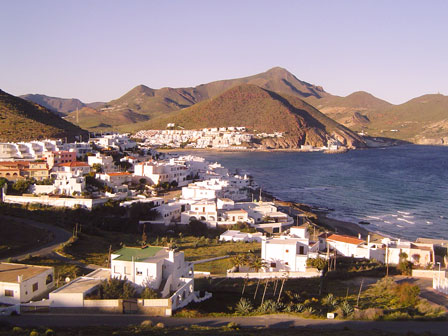UK: +44 (0) 1242 680 694
Rest of the world: + 34 950 467 104

Villaricos
Villaricos is a simple fishing village, perched precariously between the Sierra Almagrera and the sea and flanked by the Almanzora River.
Dating from Neolithic times, Villaricos was once a great Phoenician port. Forgotten by history for thousands of years, it resurfaced as a silver mining boom town in the 19th century before finally becoming the pleasant fishing village of today, with a special identity all of it's own.
Every morning early, the men go out to sea to fish, farm the land or to work in local marble quarries. Women take their children to school and chat. Life has a very traditional rhythm. Every weekend its people meet in the small old village square where, each Sunday, a colourful market thrives.
The real charm of Villaricos lies in its old fashioned simplicity and warmth of spirit and it is this lack of pretension that catches you in the end.
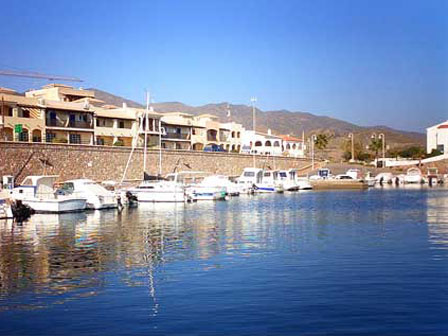
Cuevas del Almanzora
This Almerian town, owes its name to the caves that can be found there and to the river that runs through it. The town also has a rich historical and artistic heritage. In the group of its numerous historical archaeological sites, Villaricos, Fuente Álamo and Almizaraque are the most important.
Among their various monuments, attention is primarily drawn to the Marqués de Vélez Castle, erected in the 16th Century and in whose interior you will find the Casa del Alcaide, now the headquarters of the Antonio Manuel Campoy Museum of Contemporary Art and the Casa de la Tercia, home to the town´s library, the Historical Archive and the Museum of Archaeology.
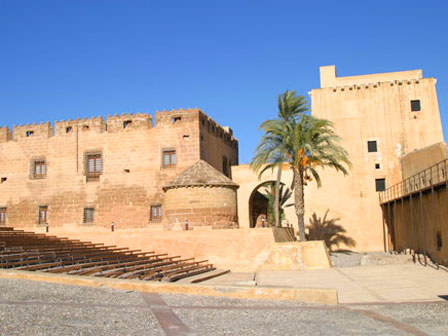
Vera
In its Antique narrow and steep streets, with white houses decorated in wonderfully coloured flowers, you will find the most outstanding monuments and buildings in Vera. Among them is the Church of Our lady of the Incarnation, that was built in the 16th Century as a fortress inside the fortified walls of the town.
The town hall, built in the 19th Century and which houses the Historical Archive, considered one of the best in Andalucia, is also there along with the Ethnographic and Archaeological Museum, in which you can see an interesting mock-up of what could have been the Muslim settlement on the Hill of Sacred Spirit (Cerro del Espíritu Santo).
The Plaza de Toros and the Fuente de los Cuatro Caños are also important places that you should not miss out on when visiting Vera. Vera Playa has a beautiful promenade and three fine-sand beaches with crystal waters.

Garrucha
The main touristic attraction of this coastal town comes from its history. In the 18th Century, when the town experienced its most fruitful time period as a port for the Levante mines, it began to get known as the ¨little San Sebastián¨. Due to this, Garrucha became a holiday destination for families of good economic and social standing. For a long time it was residence to the vice-consuls of ten different countries.
Whilst walking around the streets of the town, the promenade, known as El Malecón, will attract particular attention as it has a beautiful balcony from where there is a magnificent view of Garrucha beach where the Jesús de Nazareno Castle is located.
Also worth a visit are the three ports: 1/ the marina - more and more crowded every day with those who are keen on water sports. 2/ the commercial port, previously made for the transport of minerals and today for the casts of Sorbas. 3/ the fishing port, the second most important in Almería province and where the most flavoursome fish arrive to be auctioned off at the Garrucha fish market at dusk of every working day.
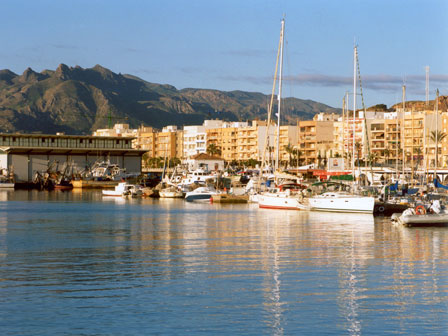
Mojacar
Mojacar is a small white washed hillside village as well as a beachside with a large selection of beaches and coves that stretches 17km.
Mojacar has a long, multi-faceted history which stretches over 4000 years. Populated by Phoenicians, Carthaginians, Romans, Greeks, and Moors, it still remains an intersection of many cultures. It was under Moorish rule that Mojacar really began to flourish. The castle was built and the town walls were expanded and fortified. Even so, it remained a Muslim town on the Christian frontier and because of this, Mojacar suffered many brutal incursions.
The town, however, still remains remarkably true to its Moorish past. Mojacar is a place that begs to be explored by foot. Park the car below the town and wander upwards at your own pace. You will encounter incredible views with nearly every step. Follow the road which snakes its way toward the town or climb the stairs which also lead upward, depositing you into the residential heart of the village. Echoes of the past will engulf you.
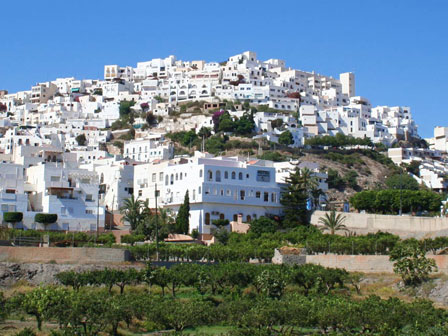
Cabo de Gata
Covering 45,663ha in the southeastern corner of Spain, Cabo de Gata-Níjar is Andalucia's largest coastal protected area, a wild and isolated landscape with some of Europe's most original geological features. The eponymous mountain range is Spain's largest volcanic rock formation with sharp peaks and crags in ochre-hues. It falls steeply to the sea creating jagged 100m high cliffs, which are riven by gullies leading to hidden coves with white sandy beaches, some of the most beautiful in Andalucia. Offshore are numerous tiny rocky islands and, underwater, extensive coral reefs teeming with marine life.
High temperatures (an annual average of 18°C) and the lowest rainfall in the Iberian peninsula (200mm annually on average) has created a large semi-desert area, with characteristic shrubby vegetation and dwarf fan palms. But the park also encompasses an outstanding variety of habitats, from coastal dunes, beaches, steep cliffs, saltpans, a substantial marine zone of 12,200ha, saltmarshes, inland arid steppe and dry river beds. Designated a Unesco Biosphere reserve in 1997, the park shelters an extraordinary wealth of wildlife, including many rare and endemic plants and endangered fauna.
Phoenicians, Romans and Arabs were all attracted by the area's rich mineral deposits like agate, jasper and, most importantly, gold, which was extracted from the mines of Rodalquilar. Other inhabitants were Berber pirates, who sought refuge in this remote corner of Andalucia, but the dozen lookout towers dotted along the coast are evidence of attempts to repel them.
Inland, the landscape is arid and desert-like, making for harsh living conditions. Life in this area 50 years ago, was described in the modern Spanish classic, Campos de Níjar, by Juan Goytisolo, published in 1959.
